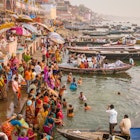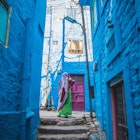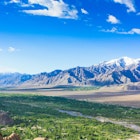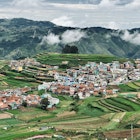
Dec 1, 2025 • 4 min read
Glimpse into a rich tapestry of rituals, quirks and beliefs at these rare festivals in the Indian Himalaya.

Dec 1, 2025 • 4 min read
Glimpse into a rich tapestry of rituals, quirks and beliefs at these rare festivals in the Indian Himalaya.

Nov 24, 2025 • 14 min read
From temples to tigers to the Taj, this roundup of unforgettable places showcases India’s astonishing scope.

Nov 14, 2025 • 7 min read
Stay in a home away from home at India's best family-run boutique hotels.

Oct 11, 2025 • 8 min read
The Festival of Lights is a magical time of twinkling oil lamps, fireworks, music and more. Here’s where you can celebrate Diwali all over the world.

Oct 1, 2025 • 12 min read
India is quietly emerging as surfing’s next big playground. Here's where to find the best swells and waves.

Sep 15, 2025 • 8 min read
Indigenous peoples form 9% of India's population. Learn about these diverse cultures with this guide.

Aug 21, 2025 • 8 min read
Trains in India are more than a means of transport. Here's what you need to know to make the most of the country's extensive rail network.

Aug 11, 2025 • 7 min read
If you want to know the best places to visit on your trip to India, ask a local. Our four Indian writers share their fave spots with you here.

Aug 11, 2025 • 22 min read
In a country as vast as India, where do you begin? Try our list of the top things to do in India, from temple trips to tiger safaris.

Jul 31, 2025 • 6 min read
India’s best coffee, tea and spice farm stays for nature, culture and slow living

Jul 31, 2025 • 13 min read
India's overwhelming size and diversity can be a lot for first-time visitors. Make it easier with our tips on what you need to know before your visit.

Jul 12, 2025 • 8 min read
Pick a wellness experience in India that works for you with this guide to treatments and the best places to try them.

Jul 10, 2025 • 5 min read
Our creative director and content creator decided to put her phone away and pick up a camera for a trip to India.

Jun 27, 2025 • 7 min read
Straddling the states of Tamil Nadu and Kerala, the Western Ghats in India are a wonderland of lush tea gardens, hill stations and rare wildlife.

Jun 23, 2025 • 15 min read
You'll find some of the world’s most intense flavors in spice-loving India. Here are the most delicious things to eat and drink during your visit.

May 20, 2025 • 8 min read
Women-only tourism is booming all over the world – India included. Let these exciting women-led tours inspire you for your next all-female getaway.

May 13, 2025 • 20 min read
With more than 100 national parks, India is a playground for wildlife fans. Here are the best national parks for spotting tigers, elephants and more.

May 9, 2025 • 8 min read
India's UNESCO-listed "toy trains" offer a trip back to the golden age of rail travel. Here's everything you need to know about these famous rail journeys.

May 8, 2025 • 8 min read
An expert biker shares his tips for planning a motorcycle trip in India.

Apr 25, 2025 • 12 min read
India is vast and varied. Get a taste of the world’s seventh largest nation on this 7-day Golden Triangle itinerary, visiting Delhi, Jaipur, Agra and more.

Apr 25, 2025 • 12 min read
Nowhere does festivals quite like India. Here are the 17 must-see celebrations in a country famous for its vibrant cultural and religious festivals.

Apr 25, 2025 • 12 min read
Crammed with captivating culture but famously fast-paced, Delhi is a deep immersion into India’s timeless rhythms. Discover more on this 3-day itinerary.